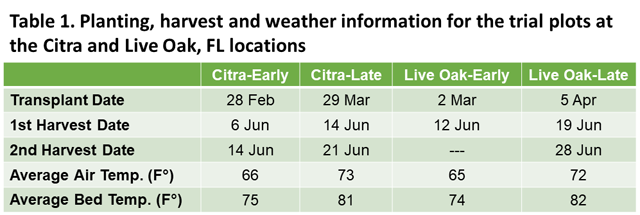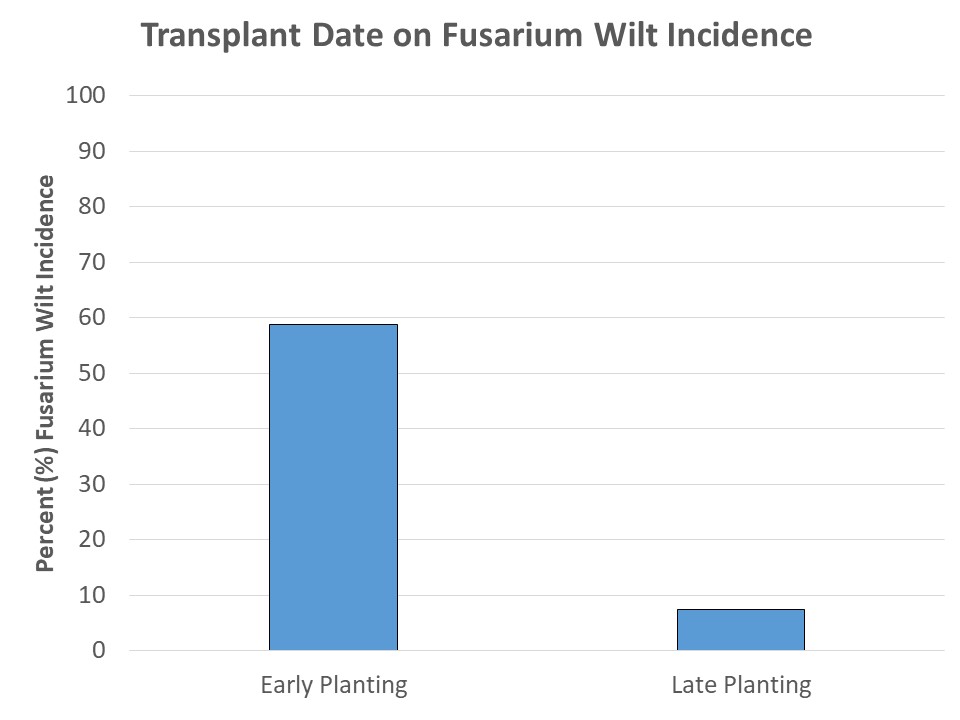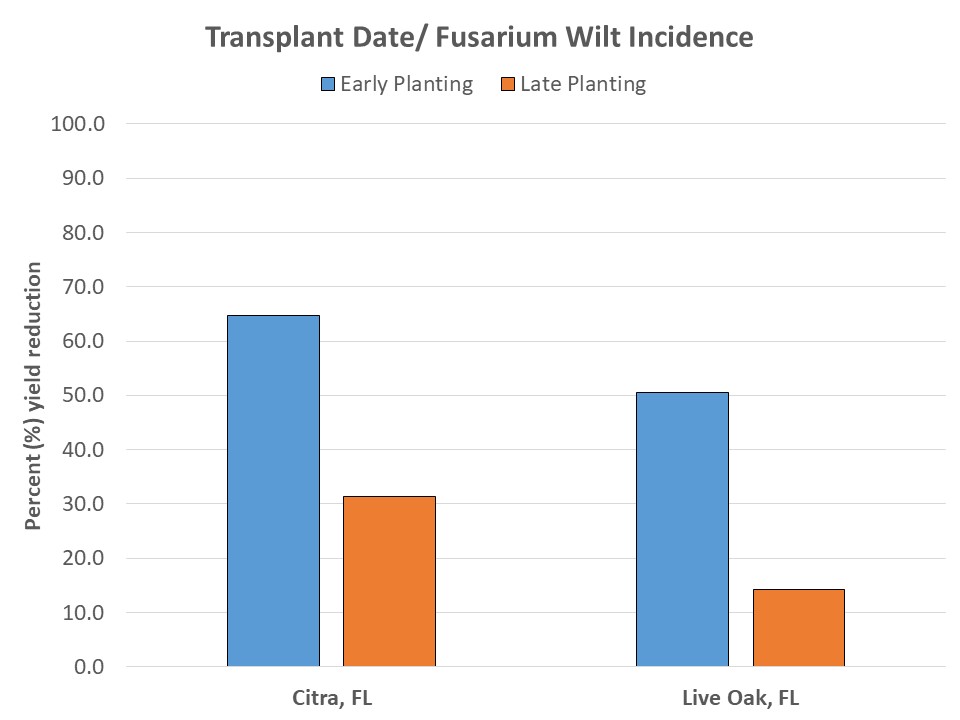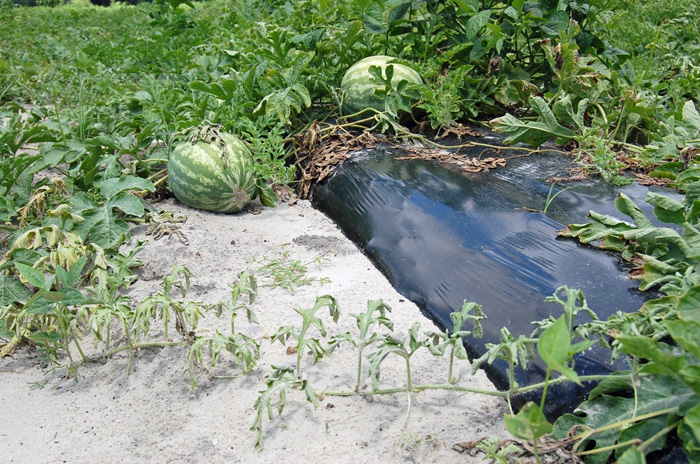Fusarium wilt is caused by the soil borne fungus Fusarium oxysporum, which continues to be a problem for many Florida watermelon producers. Management of this devastating disease requires an integrated approach that combines conventional and novel techniques. Site selection is a critical step in any watermelon disease management program, and understanding the disease history of the field can help when selecting the proper management strategies.
Recent research at the University of Florida has shown that planting date can also have significant impacts on Fusarium wilt. This research was conducted at the Suwannee Valley Agricultural Extension Center (SVAEC) in Live Oak, FL and Plant Science Research and Education Unit (PSREU) in Citra, FL during the 2017 growing season. 
The results from this study showed:
- Despite being planted a month apart, harvest dates only varied by 1 week in both locations (Table 1).
- Soil temperature was significantly warmer in the later planted trials with an average increase of about 7 degrees Fahrenheit (Table 1).
- The incidence of Fusarium wilt in the later planting date was less than 10% compared to nearly 60% in the early planting date (Fig. 1).
- Yield reductions were observed to be between 40 and 55% less in the later planted watermelons compared to the early planted ones (Fig. 2).

Figure 1. Average percent incidence of Fusarium wilt diseased plants for each planting date. Data shown is combined results from both site and only from inoculated plots used in the trial.

Figure 2. Percent yield reduction in plots inoculated with Fusarium wilt compared to control plots. Control plots were not inoculated with the pathogen and did not have any incidence of the disease.
It is apparent from these results that a later planting date should be considered for a field site with a history of Fusarium wilt. Research conducted at Clemson University supports the impacts of planting date on Fusarium wilt incidence, and indicates that even delaying planting by a couple of weeks can have an impact on the disease. Further research is needed to better understand how planting date affects the disease, and if it is possible to eliminate infection by integrating other management techniques (e.g. grafting, fumigation, fungicides). However, in situations where a field is known to be infested with the Fusarium wilt pathogen, using a later planting date for watermelons is recommended to reduce this disease’s impact on yield.
For more information, please read the following UF/IFAS publications:
2017 Florida Plant Disease Management Guide: Watermelon
Florida Crop/Pest Management Profile: Watermelon
Techniques for Melon Grafting
Vegetable Production Handbook of Florida 2017-2018
- 2025 End-of-Season Florida Peanut Disease Notes - October 24, 2025
- Southern Rust Confirmed in the Florida Panhandle – June 2025 - June 6, 2025
- Stay Ahead of Disease with the Spore Report: A New Tool to Assist with Potato and Watermelon Management - April 11, 2025

